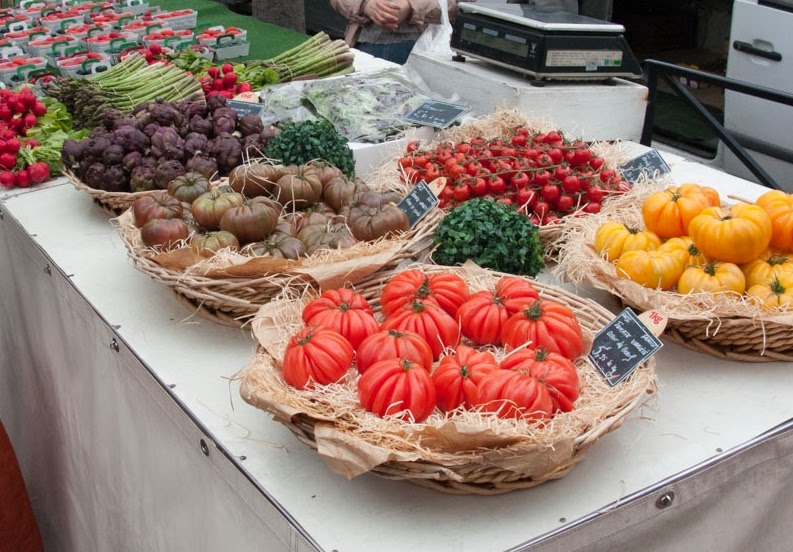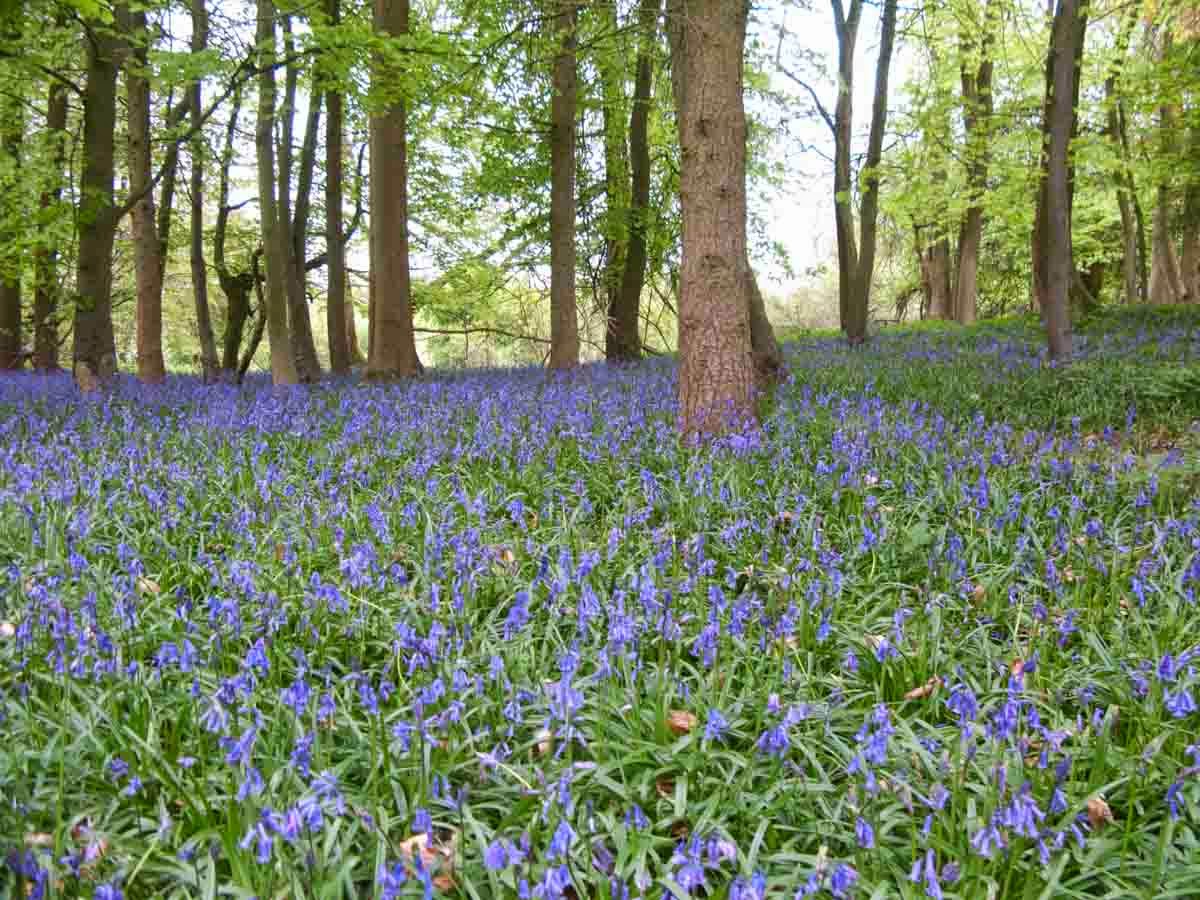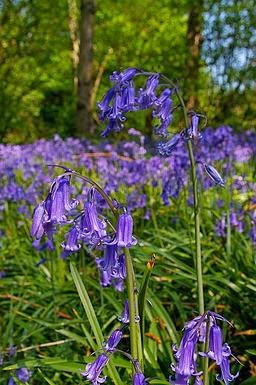Autumn is my favourite season. I love the colours, cooling temperatures and crispness of the air in the morning. One of the things I like most, however, is harvesting autumn fruit to use in cooking, baking and jams. So far, this autumn I have picked bucketfuls of blackberries, autumn raspberries, damsons, plums, apples, pears, quince, crabapples, rosehips and sloes.
It has been a wonderful harvest and my cupboards, freezer and larder are full of these delicious fruits as cakes, jams, jellies, butters or just shoved in the freezer to be used in the depths of winter. These are all fairly common and useful autumn fruits to most of us in the UK, but as I was poking about in my garden the other day I noticed quite an unusual fruit growing.
 |
The fruit of chocolate vine (Akebia quinata).
Photo credit: Helen Roberts. |
The fruit belongs to Akebia quinata,commonly known as chocolate vine – a vigorous climber that is growing really well in my garden. I have two plants growing up a north facing wall and a west-facing wall respectively and they are more or less planted in what I can only describe as gravel. They have always been strong growers despite neglect, but they have never produced fruit.
Last winter I decided to prune it back really hard with some hand shears as it was getting unruly. I thought I may have been too severe and they may not make it, but this summer they produced a mass of flowers and early autumn produced some lovely large weird sausage shaped fruit.
The plant is native to Japan, China and Korea. The sweet but insipid fruit pulp can be eaten, while the rind of the fruit is used like a vegetable in cooking – often stuffed with minced meat and deep fried. The leaves are used as a tea infusion.
Inspired by the weird and wonderful fruit in my garden, I ventured to the Botanic Gardens for a tour with botanical horticulturist, Andy Winfield. I told Andy I wanted to see some unusual fruit and seeds.
The Garden’s weird and wonderful fruit
The first plants on the tour, which were listed at the welcome hut of current things to see, were sunflowers. The variety, ‘Giant’, produced a rather wonderful forest that rose a couple of metres above us. My sons have grown this variety but the ones in the Garden are colossal by comparison.
 |
Cape gooseberry (Physalis peruviana) fruit is wrapped in
a papery calyx. Photo credit: Helen Roberts. |
In the same bed were two species of Physalis, a genus in the nightshade family (Solanaceae). Physalis philadelphica, or the tomatillo, bears small green-purple fruit and are a staple of Mexican cuisine in dishes such as salsa verde. I tried one and it tasted a bit like a very sweet tomato – I wasn’t enamoured, but I think they are better cooked. Physalis peruviana, the Cape gooseberry, on the other hand has a wonderful sweet pineapple-like flavour. The fruit is smaller than the tomatillo, bright orange in colour, with lots of little seeds inside. Just like the tomatillo, the fruit is enclosed in an inflated papery calyx.
 |
Sweet chestnut (Castanea sativa).
Photo credit: Helen Roberts. |
Walking towards the hops in the western herb garden we walked past a fairly young Sweet Chestnut tree (Castanea sativa), which had dropped numerous spiky chestnuts, many of which had split to reveal the lovely glossy brown nuts inside. These nuts are roasted in many different countries and used to make stuffings for meat or vegetables. I have a bit of a sweet tooth so I am very fond of the use of these nuts in confections, puddings, desserts and cakes, my favourites being crème de marron and marrons glacés. Chestnuts used to be the food of the poor and were used by peasants as a staple instead of grains in parts of southwest France and parts of Italy. In France the chestnut tree is often referred to as l’arbre à pain, or the ‘bread tree’ as the chestnuts were ground into flour. The trees can grow to an impressive 20-35 metres in height with a 2 metre diameter trunk.
 |
The cocoa tree’s tiny flowers are clustered
directly on the trunk. Photo credit: Helen Roberts. |
My tour continued into the glasshouses to look at some economically important plants as well as others that are simply weird and wonderful looking. The cocoa tree, Theobroma cacao, was our first stop – after all, who could pass on chocolate? This smallish tree with large glossy green leaves lives in the Garden’s tropical glasshouse and is a native of central and South America. At first glance it’s quite unassuming, but look a bit closer and you can see the distinctive shape of the cocoa pod. I was amazed by the size of the tiny cream flowers that grow in clusters directly on the trunk – a term known as cauliflory – and that these tiny flowers can produce such a large fruit. The pod contains 20-60 seeds within a white pulp, which are the main ingredient of chocolate.
The history of cacao dates back to the early formative period (1900-900 BC) when it was considered a very important part of Mesoamerican culture. The beans constituted both a ritual beverage and a major currency system in pre-Columbian Mesoamerican civilisations.
“We had a volunteer working at the gardens who used to work for J S Fry & Sons – a chocolate manufacturer in Bristol,” revealed Andy. “He said you can make about five bars of chocolate from one pod!”
 |
The citrus known as Buddha’s hand (Citrus medica var. digitata).
Photo credit: Helen Roberts. |
The tropical glasshouse also houses a weird looking citrus called ‘Buddha’s Hand’, Citrus medica var. digitata, which is cultivated in Japan and China. It looks like a small wizened citron with fingers. The fleshy peel can be steamed and candied fresh or it can be used for its highly aromatic and fragrant zest. The fruit has been an offering in Buddhist temples for a long time.
After the glasshouses, Andy took me to the pond where there is a rather ancient looking medlar (Mespilus germanica) tree, laden with fruit. I see this tree a lot in the various gardens I visit, but I have never used the fruit for anything.
 |
Fruits of the medlar tree (mespilus germanica).
Photo credit: Helen Roberts. |
“The fruit needs to be ‘bletted’,” said Andy, “which is when the fruit is browned by rot after a frost or naturally in storage over time. Then it can be eaten raw or used to make desserts, jelly, medlar cheese [akin to lemon curd] and wine.”
I recall my mother making medlar jelly, but I cannot remember ever tasting it. Perhaps I will try making something of the medlars after our first frost. My tour inspired thoughts of jam making sessions with some new and exotic fruits. There are lots of weird and wonderful fruits at the Botanic Garden right now – definitely worth a visit – who knows how it will inspire you?!
.jpg)


.jpg)














.jpg)
